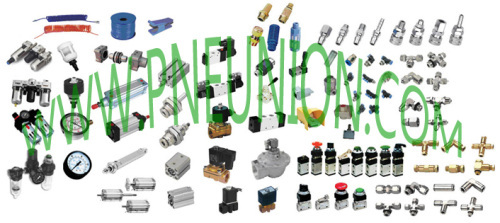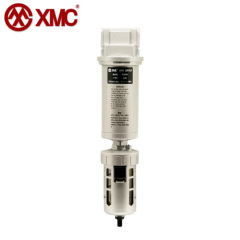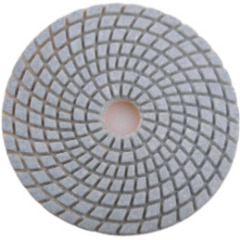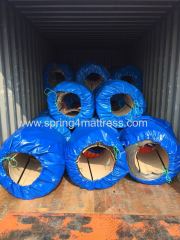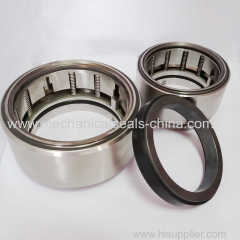Product (228)
-
Filter Regulator Lubricator
(8)

- Air Source treatment (27)
- Air cylinders (29)
- Air operated valves (44)
- Air Solenoid valves (22)
- Brass Push in fittings (11)
- Air tube fittings (70)
- Brass ball valves (5)
- Air blow guns (5)
- Vacuum Ejector (6)
- Hydraulic cylinders (1)
Valves' knowledge (1)
News (30)
Credit Report
Products Index
Company Info
E.DO TOOLS CO.,LIMITED [China (Mainland)]
Business Type:Manufacturer
City: Ningbo
Province/State: Zhejiang
Country/Region: China (Mainland)
News
Pneumatic Systems
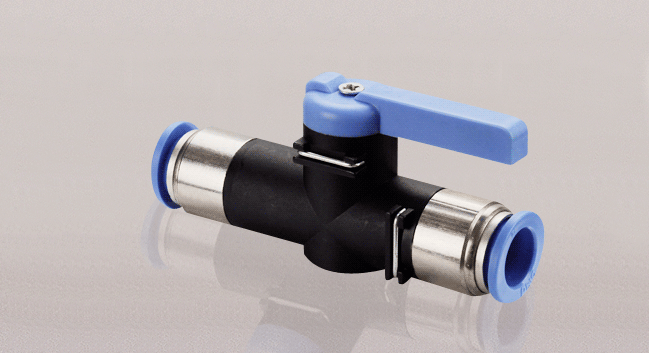
Factory-plumbed, pneumatic-power users need not worry about poisonous leakages as the gas is commonly just air. Smaller or stand-alone systems can use other compressed gases which are an asphyxiation hazard, such as nitrogen - often referred to as OFN (oxygen-free nitrogen), when supplied in cylinders.
Any compressed gas other than air is an asphyxiation hazard - including nitrogen, which makes up approximately 80% of air. Compressed oxygen (approx. 20% of air) would not asphyxiate, but it would be an extreme fire hazard, so is never used in pneumatically powered devices.
Portable pneumatic tools and small vehicles such as Robot Wars machines and other hobbyist applications are often powered by compressed carbon dioxide because containers designed to hold it such as soda stream canisters and fire extinguishers are readily available, and the phase change between liquid and gas makes it possible to obtain a larger volume of compressed gas from a lighter container than compressed air would allow. Carbon dioxide is an asphyxiant and can also be a freezing hazard when vented inappropriately.
Comparison to hydraulics:
Both pneumatics and hydraulics are applications of fluid power. Pneumatics uses an easily compressible gas such as air or a suitable pure gas, while hydraulics uses relatively incompressible liquid media such as oil. Most industrial pneumatic applications use pressures of about 80 to 100 pounds per square inch (550 to 690 kPa). Hydraulics applications commonly use from 1,000 to 5,000 psi (6.9 to 34 MPa), but specialized applications may exceed 10,000 psi (69 MPa).
Advantages of pneumatics
●Simplicity of Design And Control
●Machines are easily designed using standard cylinders & other components. Control is as easy as it is simple ON - OFF type control.
●Reliability
Pneumatic systems tend to have long operating lives and require very little maintenance.
Because gas is compressible, the equipment is less likely to be damaged by shock. The gas in pneumatics absorbs excessive force, whereas the fluid of hydraulics directly transfers force.
●Storage
Compressed Gas can be stored, allowing the use of machines when electrical power is lost.
●Safety
Very low chance of fire (compared to hydraulic oil).
Machines can be designed to be overload safe.
Advantages of hydraulics
●Liquid (as a gas is also a 'fluid') does not absorb any of the supplied energy.
●Capable of moving much higher loads and providing much higher forces due to the incompressibility.
●The hydraulic working fluid is basically incompressible, leading to a minimum of spring action. When hydraulic fluid flow is stopped, the slightest motion of the load releases the pressure on the load; there is no need to "bleed off" pressurized air to release the pressure on the load.
Pre Page:
Solenoid valve
Next Page:
Pneumatic Technology


